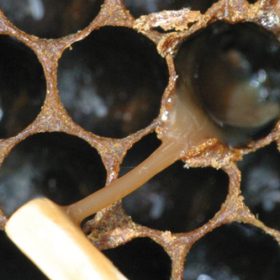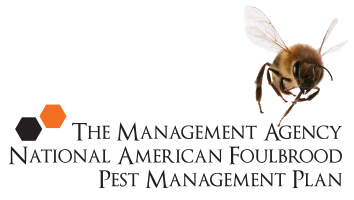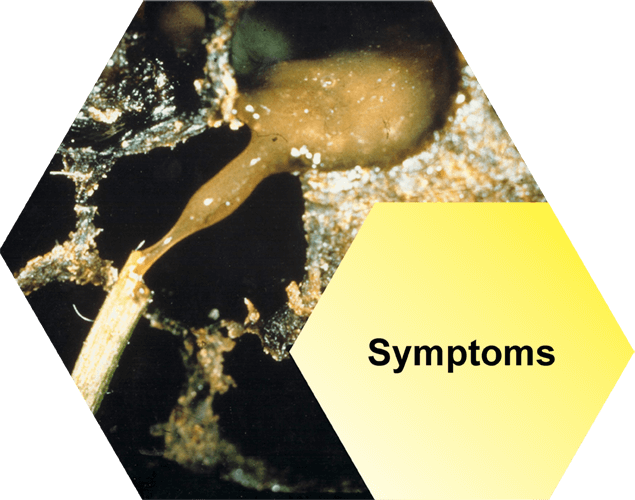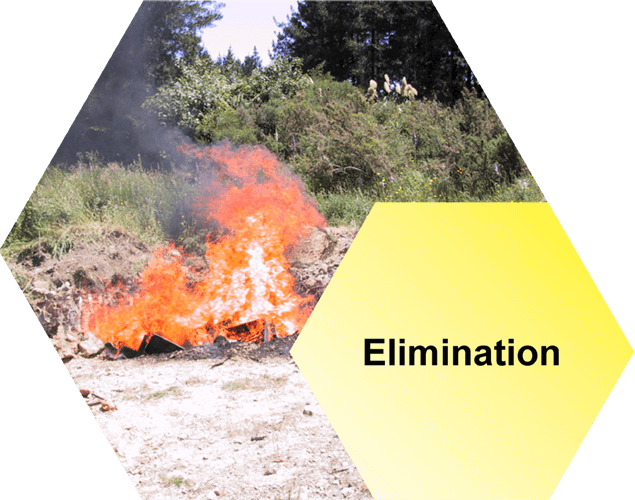"Ropiness" of brood
Introduction to the ropiness test

AFB infected larvae at both pre pupal and pupal stages display a characteristic “ropiness” when a small stick is used to slightly stir the diseased tissue in the cell and then the stick is slowly removed (Fig. 29).
The ropiness is thought to be caused by the presence of long chains of the vegetative stage of AFB bacteria intertwining and producing an elastic, binding effect.
The ropiness test is a common technique used to diagnose American foulbrood (for a description of how to accurately perform this test, go to the ropiness test , within the Inspection and Diagnosis section.
A positive ropiness test will almost always correctly diagnose AFB.
Videos
Our videos cover everything from your legal obligations to how to recognise AFB, collecting cell and bee samples and more.
Symptoms
There’s a lot of good information here, telling you everything you need to know about recognising AFB: the visual symptoms, smell of AFB and more.
Inspection and Diagnosis
Successfully eliminate AFB by telling the difference between symptoms of AFB and other brood diseases in the hive. We tell you the best methods for inspecting your hives.
The Law
New Zealand beekeepers have a number of legal obligations that must be met regarding AFB disease. Read the shortened list in summary, here.
Elimination
Most hives become infected because bees, honey or equipment have been put into a hive from another hive that is infected with AFB. Lower your chances of an AFB infection by reading this section.
AFB Recognition Course Info
Find out when the next AFB Recognition and Competency Courses, or Refresher Courses are available. These are held throughout the year in various New Zealand locations across the South Island and North Island.
The AFB App
Follow the link below to open the App. Once open to save to your device you need to bookmark the URL on your phone so you can find it easily again. Please click here to open.








